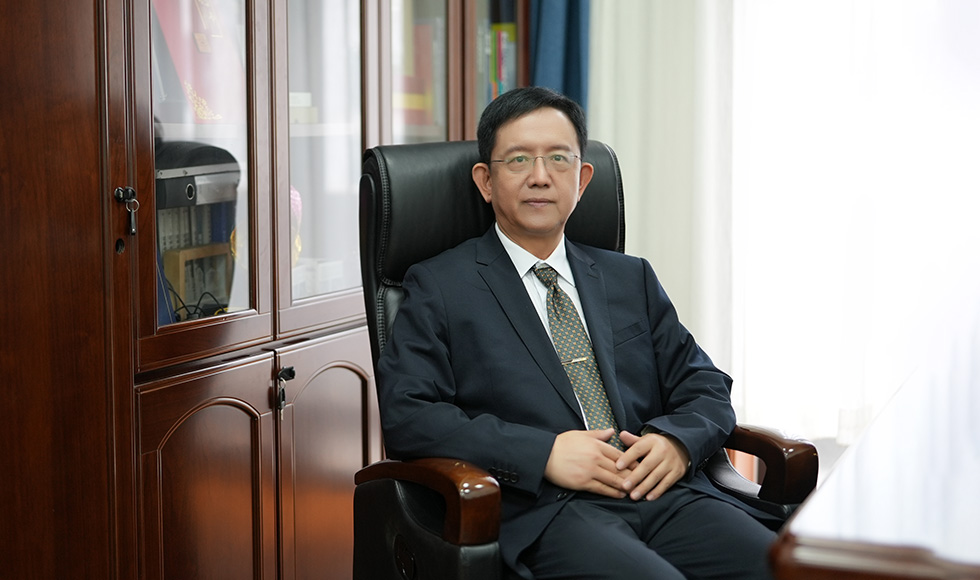
Telephone:+86 010 62771685
E-mail:
Doctor of Science, Institute of crystallography, and Laboratory of IOT (integrated optics technology), University of Cologne, Germany.
Master Degree, Institute of crystal materials (national key laboratory of crystal materials), Shandong University , P. R. China.
Diploma of experiment physics, Department of Physics, Shandong University, P. R. China.
清华大学类脑计算研究中心,主任
director of centre for brain inspired computing research, director of optical memory national engineering research centre, department of precision instrument depart, Tsinghua University, P.R. China.
Data Storage Institute (DSI), The Agency for Science, Technology and Research (A*STAR), Singapore Program Manager of Artificial Cognitive Memory program, A*STAR (May 2010 – 2013) Division Manager of Optical Materials & Systems Division, DSI (2003 - 2012) Program Manager of Non-volatile Memory program, DSI (June 2010 - 2012) Program Manager of Optical Media Group, Principal engineer (1998 - 2003) Principle investigator of “Research on memoristor materials and prototype devices” (Oct. 2010 – present) Co-Principle investigator of “PCRAM and RRAM and Advanced Logic Devices” (Jan. 2010 – present) Project Leader of “Investigation of PCRAM cell at the extreme condition in dimensional and time domains” (June 2007 – May 2009) Project Leader of Nano-Phase Change Random Access Memory Cell (January 2005 - January 2007) Co-Project Leader of “Super-Resolution Near-field Structure (SuperRENS) Optical Media” (June 2006 to December 2007) Project Leader of “High speed & high density optical re
3.City University of Hong Kong, Photonics Center, Hong Kong, Postdoctor
4.Fraunhofer Institute for Applied Optics and Precision Engineering IOF, Germany, Postdoctor
5.Shandong University, national key laboratory of crystal materials, Lecturer
Shandong University, Research Assistant
清华类脑计算研究中心于2014年9月创立,施路平教授为中心主任,中心宗旨是突破类脑智能关键技术,发展人工通用智能,由校内7家院系所联合而成,融合了脑科学、电子、微电子、计算机、自动化、材料以及精密仪器等学科。
Prof. Shi joined Tsinghua University (THU) in 2013 and founded the Center for Brain Inspired Computing Research (CBICR) in 2014. His research interests include brain-inspired computing in all directions from fundamental theory, neuromorphic devices, chip, software to systems and applications.
In order to overcome the bottlenecks of the von Neumann system architecture and realize ultimate artificial general intelligence, Professor Shi and his team investigated brain-inspired computing models and algorithms, brain-inspired chips and brain-inspired computers, and developed the basic theory and core technologies of artificial general intelligence.
In November 2015,the First Cross-modal mixed-architecture neuromorphic brain inspired chip,named ‘Tianjic’was designed and taped out. This chip is able to stimulate large scale neural networks with competitive advance in high speed,real-time,and low cost. Related work was published on Science Robert in Dec/2016.
In October 2017, Professor Shi and his team successfully developed the second generation of Tianjic neuromorphic chip. The chip is based on advanced 28-nm semiconductor technology and integrates 10 million synapses and approximately 40,000 neurons. It supports Spiking Neural Networks (SNN) and Artificial Neural Networks (ANN), including Convolutional Neural Networks (CNN), Multi-layer Perceptron (MLP), and Long Short-Term Memory (LSTM) network architectures. Compared with other neuromorphic chips, see for example, the IBM TrueNorth chip, the chip density, speed, and bandwidth have been significantly improved.
In the year 2017, Professor Shi’s team has also developed a software tool-chain for neuromorphic chips, which supports the automatic mapping and compilation of neural network algorithms from Tensorflow, Caffe, and other machine learning platforms to the Tianjic chips. In addition, the team has also set up the first brain-inspired computing demonstration platform in China.
In the year 2018, Professor Shi’s team proposed a framework named WAGE for both inference and training of deep neural networks, which can simultaneously quantize weights, activation, errors and gradients to low bit width integers. This model empowers low-power neuromorphic chips with online learning abilities.
In the same year, Professor Shi’s team also proposed a new algorithm named Spatio-Temporal Backpropagation (STBP) that employs the spatio-temporal features of SNNs to solve the non-differentiable issue at spiking time. An approximated derivative for spike activity was proposed, which is appropriate for gradient descent based training. This algorithm is suitable for both fully connected and convolutional architectures, which enables training deep SNN based on the classic backpropagation.
